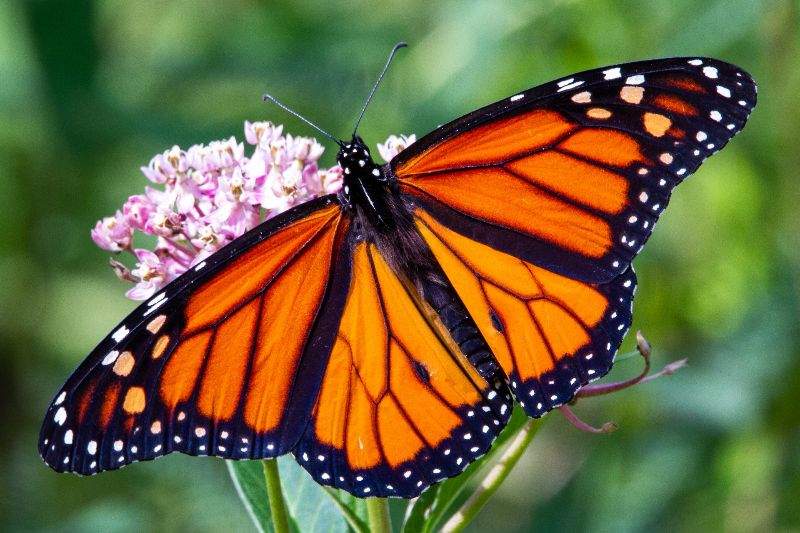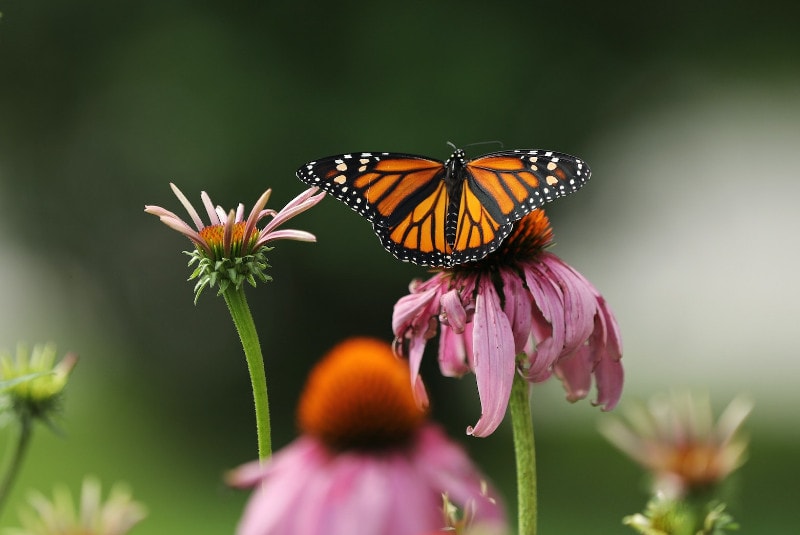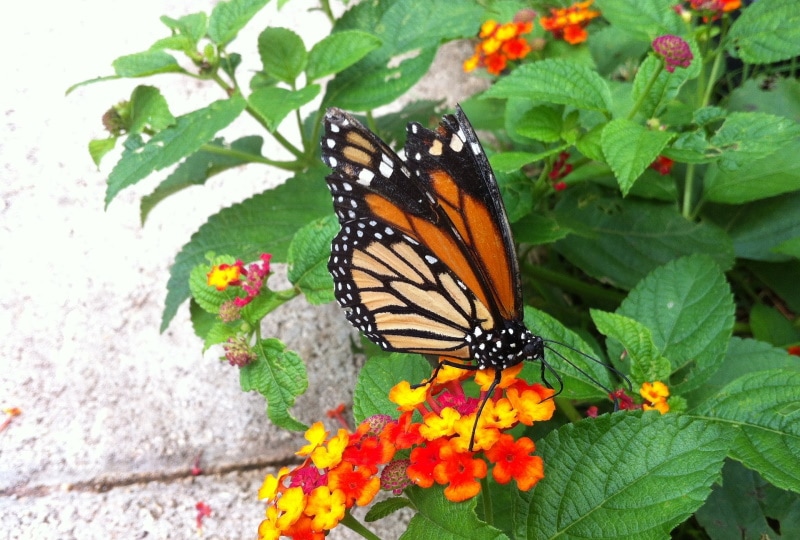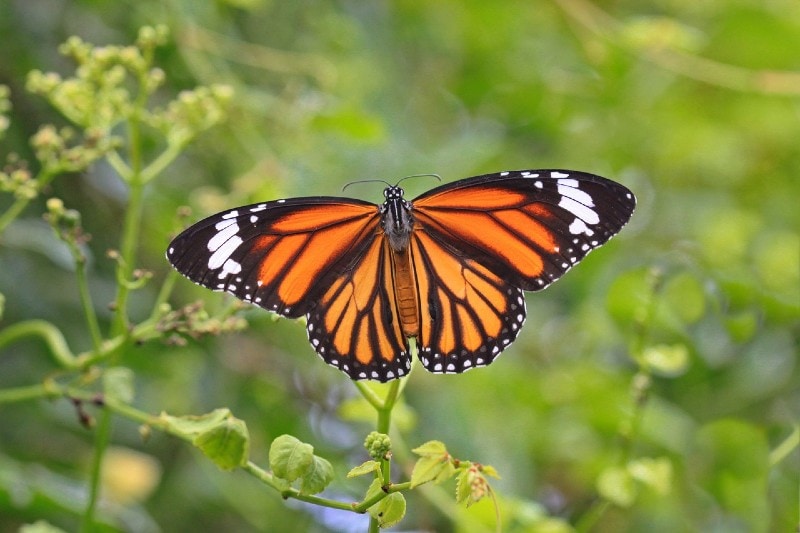What Is the State Insect of Texas? How Was It Decided?
-
Pete Ortiz
- Last updated:

On the 4th of July 1776, the United States gained independence from Britain. Shortly after, its states started adopting various symbols to represent the values of their people and culture. Texas was one of those states, and it settled on the Monarch butterfly as its official state insect.
A state symbol can be anything, as long as it represents the people’s cultural heritage and/or natural treasures. What’s more, states are allowed to have more than one official state symbol. So, they can choose an insect, a mammal, crop, seal, etc.
Below, we’ll look at how the Monarch became the state insect of Texas.
How Did the Monarch Species Become a State Symbol?
Arlene Reid Wohlgemuth served as a member of the Texas House of Representatives from 1995 to 2005. During her first term in office, in 1995, she introduced several resolutions in the house, including that of declaring the Monarch butterfly the official state insect. But the idea wasn’t originally hers, as we’ve learned she was being pushed by the students’ schooling in the 58th district.
Giving the Monarch species that status didn’t face much resistance from the legislature, seeing as most of the House’s members were already drawn to the butterfly’s beauty. On the declaration day, they describe the Monarch as a species that’s just as beautiful as the Texas sunset.
They also appreciated the fact that the butterfly has always exemplified nobility and determination in the face of adversity, and those are attributes that resonate with a lot of people who call the Lone Star State their home.

The Monarch Butterfly Field Guide
Identifying the Monarch butterfly is probably one of the easiest things you could do. When you go out looking, focus on areas characterized by less extreme climates—it’s been long established that extreme weather often reduces their chances of survival.
Physical Appearance
According to the Monarch world, orange is the new black. Both the male and female Monarch will possess two pairs of wings. The wings will be colored bright orange and decorated using black veins and white spots. The male vein will be slightly different from that of the female in that it has distinguishable black spots.
The colors worn by the caterpillars are very different from those found on the butterfly. As caterpillars, they have white, black, and yellow-colored bands. If you move a little bit closer to them, you’ll be able to see antennae-like tentacles attached to what seems to be the front part of their bodies and at the back. The said tentacles are about 2 inches long before they start metamorphosing.
To become a butterfly, the caterpillar will form something called a chrysalis. It is in there that they’ll go through the metamorphosis process, before emerging as a fully winged adult species. The Monarch’s chrysalis happens to be seafoam green, with edges that have yellow spots.

Feeding Habits
Caterpillars often feed on milkweed leaves, but the butterfly loves the nectar it produces, as well as those found in other blooming native plants. The toxins found in milkweed are what protect this family from predators looking to take advantage of their passive nature, as it usually leaves a bad taste in their mouths. It also makes some of them sick.
An adult Monarch knows that it doesn’t have to eat milkweed leaves to feel protected because all the toxins that they accrued as caterpillars don’t flush out of their systems.
Natural Habitat
Monarchs love spending time in forests and the mountains. The population found in North America is normally split into two: the western and eastern populations. What separates them is the Rocky Mountains.
We don’t have very many migratory insects on this planet. There are very few, and the Monarch butterfly is one of them. In the summer, they’ll spread out to the southern region of Canada. In autumn, the western population will fly to the coastal parts of California to brace for winter, while their eastern peers move to central Mexico, where they’ll spend their time in the cooler regions of the high mountains.

Breeding Habits
Like all living organisms, Monarchs have a way of communicating. They’ll do so by using scents and colors, especially during the breeding season. For the male to lure a spouse, he’ll have to release certain chemicals from his scent glands, located on the hind wings. If he’s successful, the couple will spend most of their spring and summer mating, searching for food, and laying eggs.
Life Cycle
It’s common knowledge that the Monarch lays all its eggs on the leaves of the milkweed species. And it only takes 5 days for those eggs to hatch. They’ll hatch into caterpillars, which constantly feed on milkweeds while molting several times in 14 days.
Once this period elapses, they’ll create a chrysalis, undergo metamorphosis, and emerge as butterflies after another 14 days. The lifespan of an adult butterfly is relatively short, seeing as they only get to live for 4 to 5 weeks.

Threats to the Monarch Species
The World Wildlife Foundation has reiterated on several occasions that the biggest threats to this species are habitat loss and climate change. As per their findings, climate change has indirectly disrupted their annual migration patterns, by influencing the weather situation in both their breeding and wintering grounds. A colder winter is detrimental to their health, while a hotter summer makes breeding difficult.
Habitat loss is considered a threat because we’re taking away their homes. Shelters that they often need to shield themselves against the cold or heat, reproduce, and feed. We keep on cutting down trees and destroying the milkweed species, not knowing they are heavily relied upon by the caterpillars.
The organization is also against their use of herbicides, as they eliminate the species’ primary food source, which is milkweed.

Conservation
The last time we checked, the Monarch species has been tagged as a species of least concern. Then again that was a decade ago, and so many things have changed since then. For example, it’s now evident that the climate situation has worsened, as it’s affecting most parts of the world.
Fun Facts About the Monarch Butterfly
- The Monarch butterfly is one of the most common and well-known insects on the North American continent. Besides Texas, it’s also the official state insect of Illinois, Idaho, and Alabama. West Virginia, Vermont, and Minnesota prefer calling it the state butterfly and not an insect—probably because some of them have a different state insect, a good example being West Virginia. The state’s legislature thought the honeybee was best suited for the job, as it pollinates several of their most important commercial crops.
- It’s been estimated that the wingspan of the Monarch butterfly is around 4 inches wide, and their average weight is about half a gram. That’s to say, they are as light as a paper clip.
- The Monarch is a member of the Nymphalidae It’s a very large family of about 5,000 different species around the world. They normally come in different sizes but are all brightly colored.
- The Monarch can cover more than 2,700 miles while migrating. And they have to migrate because that’s essentially part of their life cycle. We’re certain they can cover this distance and even more because they were once tagged in Nova Scotia (Canada) and found in central Mexico—two places that are 2,690 miles apart, on the continental map.
- To help with migration, nature gave the Monarch special bodily features. They all have scales on their wings to facilitate aerodynamic efficiency and a different set covering the upper regions of their thorax to help them retain heat.
- In the ecosystem, the Monarchs are prey to several predators. But to ensure their survival, they’ve resorted to eating milkweed as caterpillars, to retain cardiac glycosides. Predators find this substance very toxic, as it makes them sick, and consequently, vulnerable to other predatory attacks.
- It seems like the male and female Monarch subscribe to sexual dimorphism. This is the natural system that lets you tell the difference between a male species and their female counterparts by just looking at their physical differences. In the case of the Monarch, the females have more black scales than their spouses, while the males possess a large black spot on each of their hind wings.
- The Monarch caterpillar doesn’t stop eating, and that’s why they grow so fast. Their growth is characterized by the shedding of old skin, to expose the exoskeleton underneath. This practice of shedding skin is scientifically referred to as molting. They’ll go through it five times in 2 weeks to get to the pupal stage.
- Scientifically, we call the Monarchs the Danaus plexippus. The name was borrowed from Greek mythology that talked about the doings of Danaus (a Libyan King) and Plexippus (the son-in-law). Plexippus loosely translates to “the driver of horses.”
- Monarchs were named after Prince William of Orange, who later became King William III. He was revered and adored in equal measure by the European settlers at the time, so when the opportunity arose, they took it upon themselves to name the orange butterfly after him.
Wrapping Up
The official state insect of Texas is the Monarch butterfly. If you’d like to help save the Monarchs, join the Garden for Wildlife program that was started by the National Wildlife Federation. It’s meant to create the perfect habitat where they can easily access milkweed and be protected from pesticides. We believe that planting this specific plant species is the surest way of supporting their breeding habits if we want their populations to increase drastically.
See Also:
Featured Image Credit: bbarlow, Pixabay
Contents


